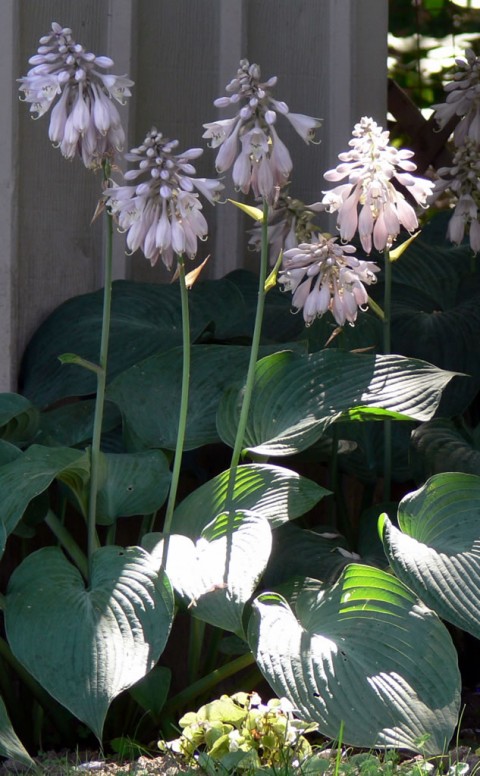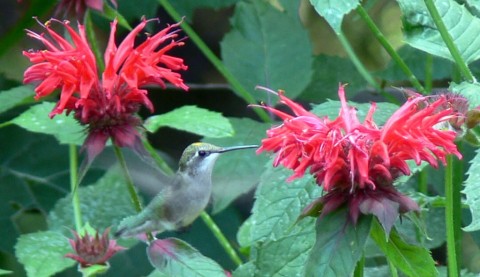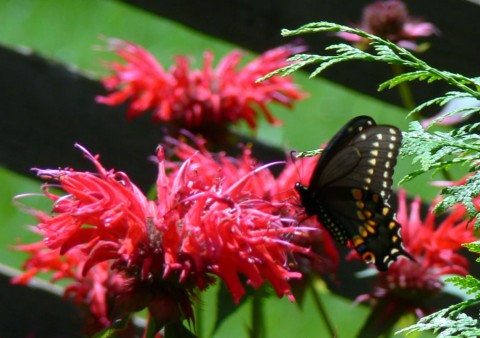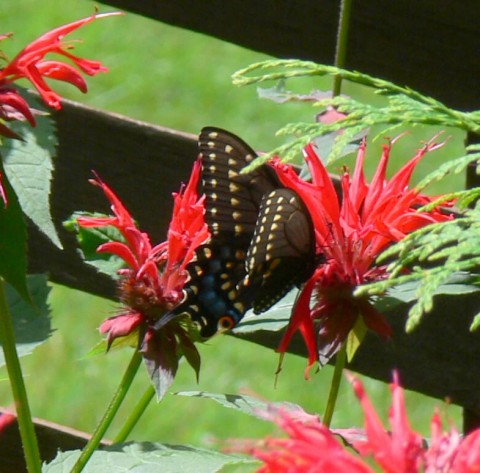Pokers of hosta flowers seemed transformed into silk by the morning light filtering through the forest’s leafy canopy.
When the hummingbird imbibes from one of the fragrant hosta lilies, he has to enter so far into the flower that he looks like he is wearing an elfin hat! My photo of this was too blurry to share, but here he is homing in on the bee balm, which he will be sipping from in a nanosecond!
The wrens’ repertoire has shrunk considerably since they started the demanding feeding schedule. Come to think of it, Mr. McD and I didn’t have time for symphonies either when we were raising our three youngsters!
Today I picked the first-fruits of the green beans – a whole bowlful, in fact! They are thriving in the sidewalk garden just in front of the Cedar Hollow sign.
A new visitor arrived today, and not a bit too soon. The black swallowtail butterfly confided that the bee balm nectar was absolutely delectable! She couldn’t get enough of it!
Mrs. Swallowtail bravely copes with a disability, having lost her lower right wing.
After flitting about the bee balm patch and sipping to her heart’s content, she headed for the parsley that I had moved to the upper knoll in anticipation of just such a visit. Now, how do you think she located the parsley in Cedar Hollow? It’s not like we have a yard full of it. You can see her laying eggs, one at a time. They are pale yellow in colour.
Caterpillars will emerge in 3-5 days. If the wrens don’t spot them, they will gorge on the parsley, and then hang from a silken girdle inside a rather ugly looking chrysalis in some secluded spot. After overwintering in the paperlike tomb, it will miraculously emerge in spring as an elegant butterfly, a black swallowtail!
Swallowtails are the state butterfly of Oklahoma, U.S.A. Besides parsley, they like dill, caraway, celery, and sweet fennel, and wild Queen Anne’s Lace. Unlike the Monarch butterfly, whose favourite food, the milkweed plant, is being eradicated by harmful pesticides, there seems to be an abundance of Queen Anne’s Lace everywhere you look. The future looks bright, indeed, for these midnight beauties.






